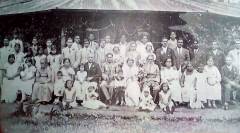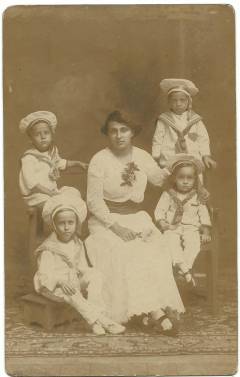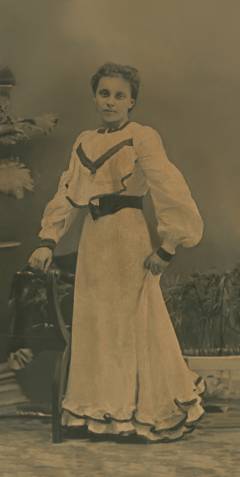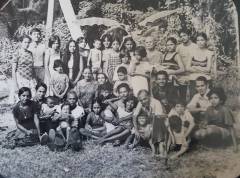Genealogy Proof Standard (GPS) is a set of principles used in genealogy to establish the quality and reliability of genealogical research. It’s like our trusty GPS (Global Positioning System) guiding us through the twisty roads of family history!
The GPS consists of five elements that should be met in order to produce a credible and accurate family history. The GPS provides a framework for genealogists to use when conducting research that is thorough, accurate, and properly cited.
The five elements of the GPS are:
- Conducting a reasonably exhaustive search for all relevant records and sources.
- Complete and accurate citation of each source used in the research.
- Analyzing and correlating all of the information collected.
- Resolving any conflicts or inconsistencies in the information.
- Providing a soundly reasoned, coherently written conclusion based on the available evidence.
Let me give you an example from my own research to illustrate the GPS in practice.
While doing research on the De Hoedt family of Jaffna, Sri Lanka, I came across the following newspaper article:

The above clipping is from the newspaper The Indian News and Chronicle of Eastern Affaires from 1852. What an elegant and old-fashioned title! Anyway, the clipping mentions Robert Henry De Hoedt, who was the son of Rudolphus De Hoedt, who had a daughter born on February 17th.
My goal was to figure out the name of the daughter. She was born in 1852, and records prior to 1867 are tedious to go through as the writing is often illegible and the documents are often in poor condition. Nevertheless, I went through the documents and I could not find any matching birth record. There’s a good chance that I missed the record or that the record was not scanned due to poor condition or that the record was present in a section where the writing was illegible.
Instead, I went through marriage records from the years 1867 onwards. My thought process was, assuming she lived to adulthood, there’s a good chance that she got married sometime after 1867. The records from 1867 onwards in Jaffna follow the Ola leaf format and I enjoy going through this format of records as there’s only one record per page and the writing is often neat and crisp. In contrast, the birth records in Jaffna prior to 1867 follow the Dutch register format that includes multiple records per page. With this format, you often find the ink from one side of the page bleeding over to the other side, making the writing illegible.
I found several candidate marriage certificates where the bride had the surname De Hoedt and I was able to find the parentage of most of these women, except for one. Enter Annie Barbara De Hoedt:

She was 18 in 1869 meaning she was born in 1851-52. So now we have here a woman with the same surname, born in the same town in about the same year. Is this good enough? Absolutely not!
She could have been the daughter of a different person, and sometimes the age given in the marriage certificate is not entirely accurate. So I made a note mentioning that Annie potentially could be the daughter of Robert Henry De Hoedt.
My next bit of information came from the Ceylon Widow & Orphans Fund. The Cairns Family History Center has indexed all these applications into a database, and individual records can be purchased for a small fee. I saw an application made by Annie’s husband Seraphim Outschoon, to join the fund. The application mentions that Annie was born on February 7th 1852. The newspaper mentions the birth date to be February 17th and not February 7th. So does this mean that Annie is not the daughter of Robert? Absolutely not! An error of margin in recording dates is expected! Typically I use the rule of thumb that a recorded date could have a margin of error or about a year. Both of these birth dates occurred in February and has a 7 on the date. So there could have been a simple transcription error. Nevertheless, I still did not conclude that Annie was the daughter of Robert.
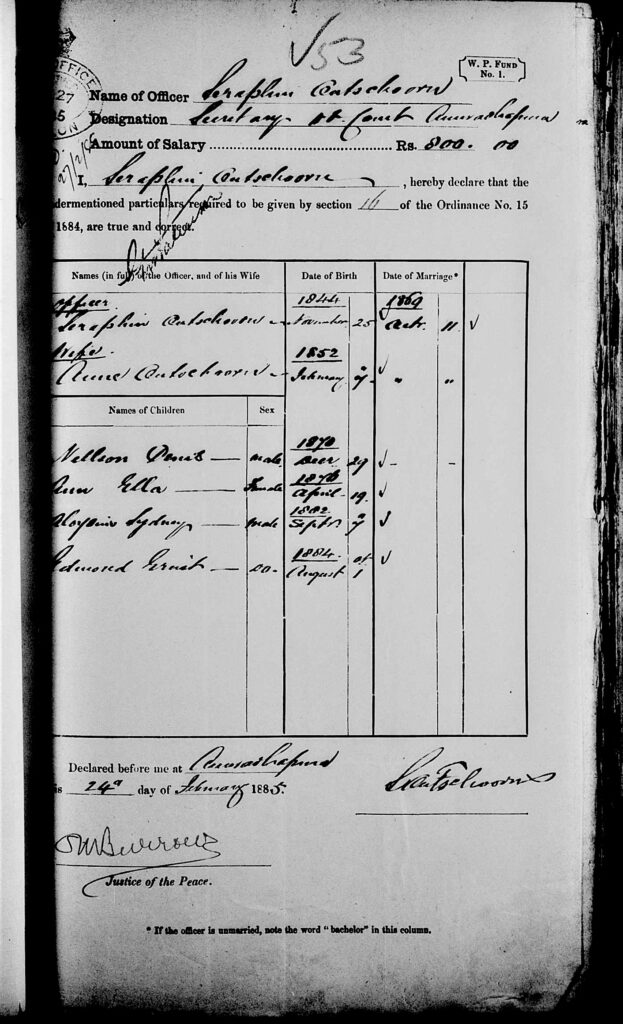
https://cdfhs.org/indexes/british-ceylon-ancestry/ceylon-civil-service-widow-orphan-fund-applications-index/
The breakthrough came when I stumbled upon the birth records of Annie’s children. And one of the children’s birth records contained the following information:

Under the Name of Mother column, it says Anne, daughter of Robert De Hoedt of Jaffna.
Finally, Annie’s father was revealed! And how fitting is that the child that revealed this information was also named Anne! Ah- the simple joys of genealogy.
So, what can we learn from this example?
- DO NOT jump to conclusions! Patience is key. Too often I see people jumping to conclusions and making false family connections. For context, I found the Indian Chronicles article on December 8th 2022, and I found Anne Ella’s birth certificate on March 23rd 2023. During this 3 month time period, I was not solely focused on finding Annie’s parents- I would have burned out if I did that. I came across Anne Ella’s birth certificate by chance while working on finding records of a different De Hoedt family member.
- Ideally have multiple different independent sources of information. In the above example, I had two civil records, one newspaper article, and one application. Having different independent sources allows you to verify the accuracy of each source, detect any errors, can provide cross-confirmation of details.
- Exhaust your research options: to find this information I scoured through directories, almanacs, books, newspapers, FamilySearch records and various other websites. In fact, after going through the civil records in Jaffa, I looked at records from other cities such as Colombo, Kandy, Trincomalee, and Anne Ellas’ birth certificate was found in Batticaloa of all places!
- Using the information from all these sources, I was able to cross-check the evidence, resolve the conflict of Annie’s birthdate and put together one coherent conclusion.
- During this process, I made notes on where I got each piece of evidence from. When I include these sources in my family tree, I want to make sure that I cite these sources properly.
By adhering to the principles of the GPS—thorough research, complete citations, careful analysis, conflict resolution, and well-supported conclusions—we can establish reliable and accurate family histories.
Sources
- Jones, T. W. (2013). Mastering genealogical proof. National Genealogical Society.




